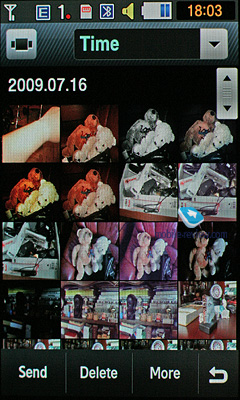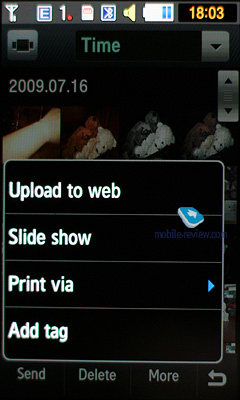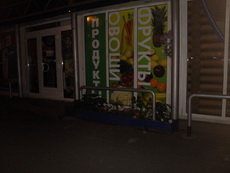|
|
12 MP camera of Samsung PIXON12 (M8910)
The megapixel race is all but over now - several phone makers have already announced their intentions to step away from it, which, essentially, means they will cease all their activities in the field of shot procession algorithms and imaging-related phone enhancements. The vast majority of phones released in 2009 will come with 5 MP camera modules, while 2010 will see a shift to 8 MP units, and it'd seem that in 2011 we should see a plethora of handsets carrying 12 MP camera onboard, but such extrapolation is completely false - in 2011 the market will still be dominated by 8 MP camera units, yet with somewhat revamped lenses and more shooting modes. In a word, phone makers will simply continue polishing their already existing solutions, although the niche of imaging-centric solutions will see the advent of 12 MP and even 15 MP matrices, but they will never become mass-market offerings. These phones have always served one purpose only: being on the cutting edge of available technology, they allow the phone makers to see how some of their brand-new technologies work, and their exorbitant price tags guarantee them mediocre sales.
The first commercially available 12 MP cameraphone is Samsung's PIXON12 - the second phone in the company's imaging-savvy line-up after the PIXON8. It retains several models previously unseen in mobile phones, thanks to Samsung adopting their experience with digital cameras. Although it was difficult to imagine Samsung taking any other route, considering their expertise in this field; at the same time for other major players in the telecom market, this is terra incognita so to speak, where they have neither sufficient experience nor means to acquire it any time soon. Even for Sony Ericsson, that have Sony next door, it's an impossible task, for they have totally different corporate cultures, prices and development centers. So Samsung have used their resources to the full.

Should the company's most sophisticated imaging-savvy device double as their flagship phone? By no means, so the PIXON12 should be viewed solely from this perspective, although I already foresee debates over whose image quality is superior: the PIXON's or the Samsung i8910 HD's. But let's get down to business.
Table of Contents:
- Technical specifications
- Document mode
- Panorama mode
- Flash
- Samsung PIXON12 vs Samsung i8910 HD
- Video
- Conclusion
Technical specifications
The PIXON12 is the only phone out there, whose camera boasts such an jaw-dropping spec sheet - I doubt we'll see a similar camera module in other Samsung-branded devices, for it'd be way too expensive for the mass market:
- CMOS-module, 12 MP, 1/3.2 inches
- Digital x4 zoon, no optical zoom
- LED flash
- Xenon flash
- Macro mode (10 cm)
- Face Detection/Smile/Smart Auto/Beauty/Vintage modes
- Wideangle lens (28mm)
- ISO Ц 100, 200, 400,800, 1600
- F=4.9 mm, 2.6
The camera is mounted on the back side of the phone, covered by a mechanical shutter that springs open whenever you launch the camera application, plus there is a cover glass (not a piece of plastic!) that lends even more protection to the PIXON12's lens. The volume controls, doubling as the zoom keys are a breeze to use, since they protrude from the casing; the two-stage camera button looks and feels very much like those found on digital cameras. In fact the PIXON12's ergonomics is very similar to what you get with digital cameras - we came out very pleased.

The camera app's horizontally arranged interface is very intuitive, since all options are literally at your fingertips - just tap on the icon you need and it'll pop up a window with the settings menu you've just picked. The display remains readable in pretty much any environment thanks to its AMOLED technology. All in all, philosophy-wise the PIXON12 camera's interface hasn't gotten far from that of the PIXON8 and some other Samsung-branded phones.




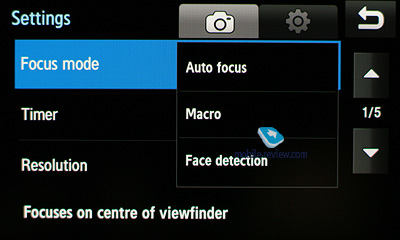
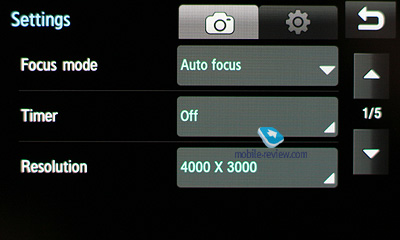
The phone comes bundled with a GPS receiver, allowing the user to make use of geo tagging, which should be a self-explanatory feature by now.
On top of that the PIXON12 boasts an image stabilizer - when enabled, though, it doesn't allow you to change the ISO settings.









The camera supports the following resolutions:
- 4000x3000 pixels, 12M
- 2560x1920 pixels, 5 M
- 1600x1200 pixels, 2M
- 640x480 pixels, 0.3M
- 4000x2400 pixels, W10M
- 2560x1536 pixels, W4M
- 1600x960 pixels, W1.5M
- 800x480 pixels, W0.4M

The fact that the PIXON12 houses a wide-angle lens, it allows capturing about 20 percent bigger pictures. The only other phone that has a similar feature is the Nokia N86, although its camera module is only 8 MP, which defeats every reason to compare them.
Let's run through the shooting modes, that have been thoroughly reworked compared to the previous handsets, so that on this front the PIXON12 resembles a digital camera:
- Single shot Ц default mode;
- Continuous Ц a quick series of shots;
- Smile shot Ц he phone detects a smile, pretty par-for-the-course feature for latest-gen phones and digital cameras;
- Vintage shot Ц sort of a filter offering you 4 settings that adjust the image's color palette;
- Panorama shot Ц both vertical and horizontal setups are supported, the phone automatically stitches 4 shots together. In fact, all you need to do is slowly move the phone in the right direction, and the PIXON12 will do the rest without your help;
- Beauty Ц this mode has been carried over from Samsung's digital cameras: it automatically corrects the humans' faces in your photo by removing blemishes, evening out skin tone and adjusting dark spots. While the quality is not always there, for many people it provides a viable alternative to using a graphical editor.
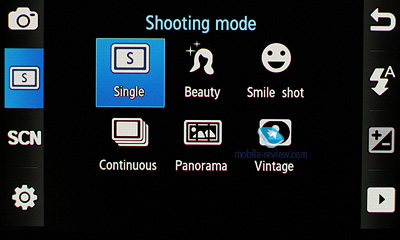
Vintage Shot (sample image).
The ISO settings are of some interest as well - while the maximum value is set at 1600 at, in most situations the phone attempts to use the lowest possible settings (50), which are more suitable for poor lighting conditions (when shooting without flash), although it makes for noise-ridden images. Check out our sample shots for all ISO settings:
 |
 |
| (+) enlarge, 4000x3000, JPEG |
(+) enlarge, 4000x3000, JPEG |
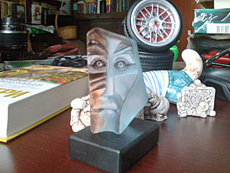 |
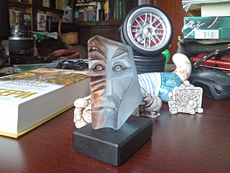 |
| (+) enlarge, 4000x3000, JPEG |
(+) enlarge, 4000x3000, JPEG |
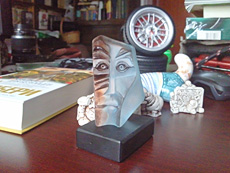 |
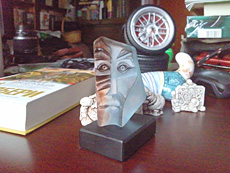 |
| (+) enlarge, 4000x3000, JPEG |
(+) enlarge, 4000x3000, JPEG |
Also a couple of samples with ISO400 and ISO1600 - I suppose the level of noise says it better than any words.
 |
 |
| (+) enlarge, 4000x3000, JPEG |
(+) enlarge, 4000x3000, JPEG |
 |
 |
| (+) enlarge, 4000x3000, JPEG |
(+) enlarge, 4000x3000, JPEG |
 |
 |
| (+) enlarge, 4000x3000, JPEG |
(+) enlarge, 4000x3000, JPEG |
Zooming in/out is done with the help of the volume rocker - the picture changes very smoothly, which is great news. The phone comes with x4 digital zoom, which is sufficient for most of the ordinary user's needs, and the result looks pretty on the handset's display on top of that. Furthermore, zoomed-in images don't lose any of their charm even on a PC screen - I'd even go as far as saying that the PIXON12's digital zoom comes very close to optical zoom quality-wise (see for yourself - it is brilliant).
Now let us show you why camera lens and its quality are the name of the game: below is a quick comparison between the PIXON12 and a quite date, yet still operable Canon IXUS 750 (7 MP matrix). As you can see, the IXUS 750 holds the upper hand both in terms of image sharpness and quality, but the PIXON12 is not hopelessly behind after all.
| Samsung PIXON12 |
Canon IXUS 750 |
 |
 |
| (+) enlarge, 4000x3000, JPEG |
(+) enlarge, 3072x2304, JPEG |
 |
 |
| (+) enlarge, 4000x3000, JPEG |
(+) enlarge, 2592x1944, JPEG |
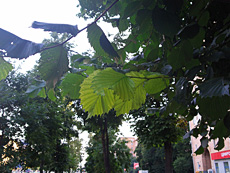 |
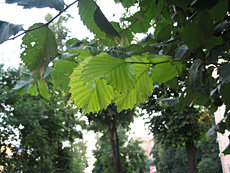 |
| (+) enlarge, 4000x3000, JPEG |
(+) enlarge, 2592x1944, JPEG |
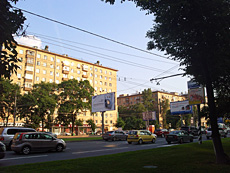 |
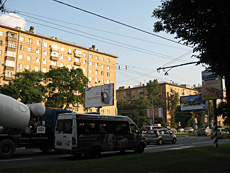 |
| (+) enlarge, 4000x3000, JPEG |
(+) enlarge, 2592x1944, JPEG |
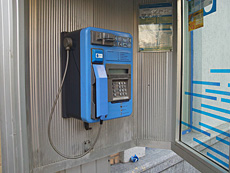 |
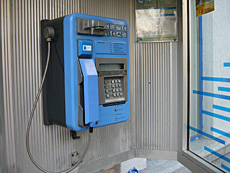 |
| (+) enlarge, 4000x3000, JPEG |
(+) enlarge, 2592x1944, JPEG |
 |
 |
| (+) enlarge, 4000x3000, JPEG |
(+) enlarge, 2592x1944, JPEG |
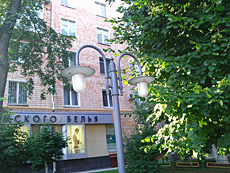 |
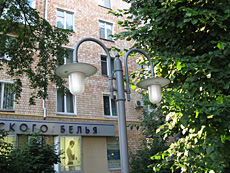 |
| (+) enlarge, 4000x3000, JPEG |
(+) enlarge, 2592x1944, JPEG |
 |
 |
| (+) enlarge, 4000x3000, JPEG |
(+) enlarge, 2592x1944, JPEG |
Then I took the cheapest and least sophisticated 8 MP camera module around (installed in the Sony Ericsson W995) and put it up against the PIXON12. As you probably have guessed, the latter came out on top, although it was difficult to expect a different outcome.
| Samsung PIXON12 |
Sony Ericsson W995 |
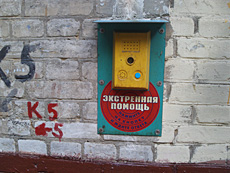 |
 |
| (+) enlarge, 4000x3000, JPEG |
(+) enlarge, 3264x2448, JPEG |
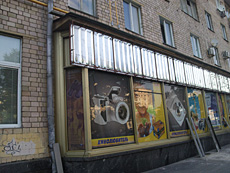 |
 |
| (+) enlarge, 4000x3000, JPEG |
(+) enlarge, 3264x2448, JPEG |
 |
 |
| (+) enlarge, 4000x3000, JPEG |
(+) enlarge, 3264x2448, JPEG |
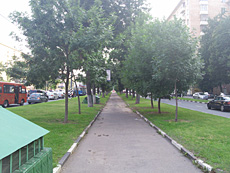 |
 |
| (+) enlarge, 4000x3000, JPEG |
(+) enlarge, 3264x2448, JPEG |
 |
 |
| (+) enlarge, 4000x3000, JPEG |
(+) enlarge, 3264x2448, JPEG |
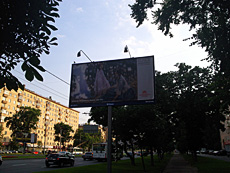 |
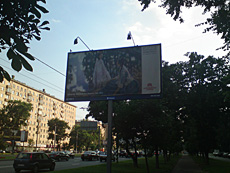 |
| (+) enlarge, 4000x3000, JPEG |
(+) enlarge, 3264x2448, JPEG |
 |
 |
| (+) enlarge, 4000x3000, JPEG |
(+) enlarge, 3264x2448, JPEG |
Now, in order to avoid groundless criticism regarding the lack of comparison between the PIXON12 and the Sony Ericsson Satio, I must say that there are two reasons why I haven't included sample shots made with both phones in to this write-up. First up, even though the Satio lost, it didn't have the final version of firmware, which could have been interpreted by the brand's fans in a myriad of different ways. And secondly, Sony Ericsson weren't particularly enthusiastic about such a comparison, so we met them halfway and solely because of this objection we will publish a head-to-head comparison between the PIXON12 and Satio on the latter's release day.
But before moving on to the rest sample images, let me take a close look at the Smart Auto mode that makes its debut in this phone. What's so special about it? It saves you the trouble of guessing which shooting mode to choose - the camera analyzes the environment and picks the most fitting mode without your help. We put this feature through its paces in a number of places and it did quite well. Although I wouldn't recommend it to those who intend to edit resulting images on PC, for this mode distorts natural colors a bit.
Also, Smart Auto allows selecting objects you want the camera to focus on right on the screen. Obviously, it's difficult to impress anybody with this feature in this day and age, but Samsung have taken it one step further - with the PIXON12 not only can you select an object to focus on, the camera also stays focused on it if it starts moving. Although I am yet to try it out at some sporting event.

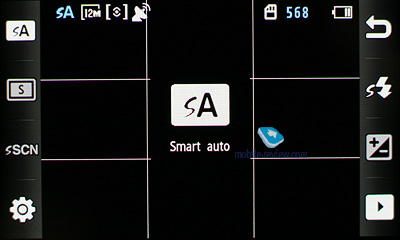
Smart Auto also features Smart Flash, that automatically sets the most fitting flash mode. Unlike other analogues, Smart Flash picks the best mode to reduce the red-eye effect and chooses the right flash power for the phone's Xenon flash, so as not to overlight the nearest objects.
The phone comes armed with the following scenes:
- Portrait
- Landscape
- Sports
- Party/Indoor
- Beach/Snow
- Sunset
- Dawn
- Night shot
- Against light
- Firework
- Text
- Fall Colour
- Candelight
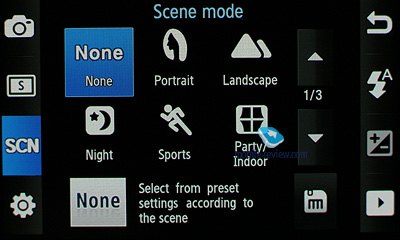
White balance:
- Auto
- Daylight
- Incandescent
- Fluorescent
- Cloudy
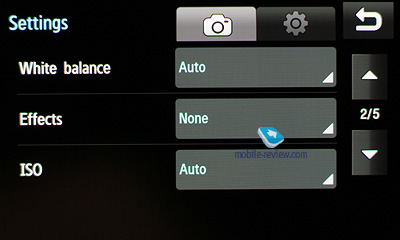
Effects:
- Black and white
- Sepia
- Negative
- Antique
- Sharpen
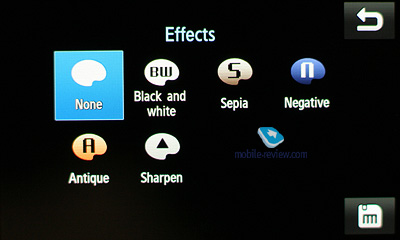
Plus there is the macro mode and blink detection feature, that offers the user to take another picture if it spots someone blinked in the previous shot.
Back to the table of contents >>>
Document mode
Using the settings menu you can select a special mode for shooting text fragments, although you probably will never have to turn it on, since even in the Auto mode the PIXON12 does a great job adjusting all options and settings for crystal clear shots.
Back to the table of contents >>>
Panorama shot
The PIXON12's panorama mode is quite remarkable not only because of its image resolution, but also the way you take panorama shots with it. Basically, all you need to do is snap the first image in the sequence and then start moving the camera left or right - the PIXON12 will trigger the shutter automatically for the second and third images, and then it will stitch all images together. While it's pretty convenient to have the software do all the work for you, you won't be able to enjoy the quality just as much due to the abovementioned resolution limit.
Back to the table of contents >>>
Flash
The PIXON12's flash performed very will during our tests, plus it comes equipped with a LED flash in addition to its Xenon module and therefore has pretty much all shooting modes covered thanks to having two types of flash at once.
Back to the table of contents >>>
Samsung PIXON12 vs Samsung i8910 HD
Everyone knows that the Samsung i8910 HD offers one of the market's finest sensors, and we normally use it as a benchmark when testing other 8 MP phones and as of today its winning streak is yet to be broken. The previous PIXON device from Samsung, the PIXON8, couldn't put up a good fight either, since its image quality was more in line with that of the Sony Ericsson C905.
The PIXON12's images boast more natural and not-so oversaturated colors, since this aspect is handled by different image processing software; however it's more a matter of personal preference. I, for one, like the i8910 HD's shots better, although the PIXON12 sure does win some points back thanks to its wideangle camera. As far as details go, they are pretty much in one boat - the PIXON12 doesn't suffer from the increased megapixel count on this front. However when shooting in poor lighting conditions, the HD holds the upper hand, perhaps due its superior photosensitivity.
Sample images taken outdoors.
| Samsung PIXON12 |
Samsung i8910 HD |
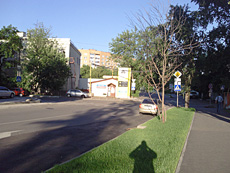 |
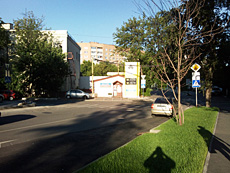 |
| (+) enlarge, 4000x3000, JPEG |
(+) enlarge, 3264x2448, JPEG |
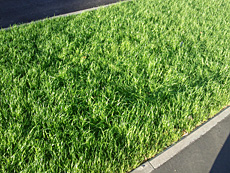 |
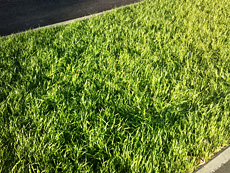 |
| (+) enlarge, 4000x3000, JPEG |
(+) enlarge, 3264x2448, JPEG |
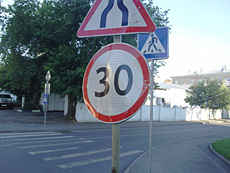 |
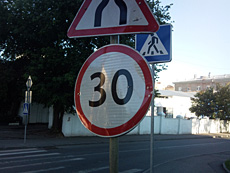 |
| (+) enlarge, 4000x3000, JPEG |
(+) enlarge, 3264x2448, JPEG |
 |
 |
| (+) enlarge, 4000x3000, JPEG |
(+) enlarge, 3264x2448, JPEG |
 |
 |
| (+) enlarge, 4000x3000, JPEG |
(+) enlarge, 3264x2448, JPEG |
 |
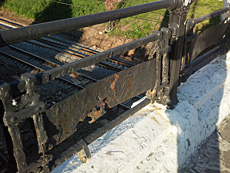 |
| (+) enlarge, 4000x3000, JPEG |
(+) enlarge, 3264x2448, JPEG |
 |
 |
| (+) enlarge, 4000x3000, JPEG |
(+) enlarge, 3264x2448, JPEG |
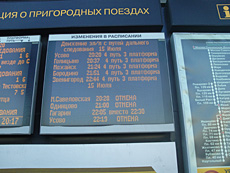 |
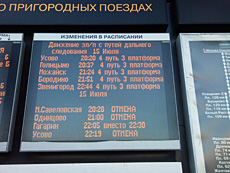 |
| (+) enlarge, 4000x3000, JPEG |
(+) enlarge, 3264x2448, JPEG |
 |
 |
| (+) enlarge, 4000x3000, JPEG |
(+) enlarge, 3264x2448, JPEG |
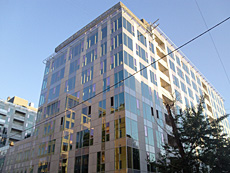 |
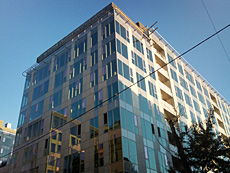 |
| (+) enlarge, 4000x3000, JPEG |
(+) enlarge, 3264x2448, JPEG |
 |
 |
| (+) enlarge, 4000x3000, JPEG |
(+) enlarge, 3264x2448, JPEG |
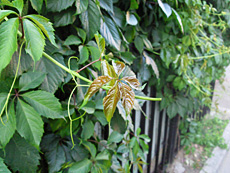 |
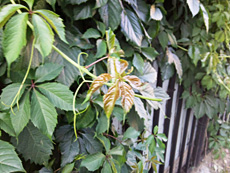 |
| (+) enlarge, 4000x3000, JPEG |
(+) enlarge, 3264x2448, JPEG |
 |
 |
| (+) enlarge, 4000x3000, JPEG |
(+) enlarge, 3264x2448, JPEG |
 |
 |
| (+) enlarge, 4000x3000, JPEG |
(+) enlarge, 3264x2448, JPEG |
 |
 |
| (+) enlarge, 4000x3000, JPEG |
(+) enlarge, 3264x2448, JPEG |
 |
 |
| (+) enlarge, 4000x3000, JPEG |
(+) enlarge, 3264x2448, JPEG |
Macro indoors.
| Samsung PIXON12 |
Samsung i8910 HD |
 |
 |
| (+) enlarge, 4000x3000, JPEG |
(+) enlarge, 3264x2448, JPEG |
 |
 |
| (+) enlarge, 4000x3000, JPEG |
(+) enlarge, 3264x2448, JPEG |
 |
 |
| (+) enlarge, 4000x3000, JPEG |
(+) enlarge, 3264x2448, JPEG |
 |
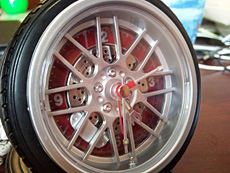 |
| (+) enlarge, 4000x3000, JPEG |
(+) enlarge, 3264x2448, JPEG |
 |
 |
| (+) enlarge, 4000x3000, JPEG |
(+) enlarge, 3264x2448, JPEG |
 |
 |
| (+) enlarge, 4000x3000, JPEG |
(+) enlarge, 3264x2448, JPEG |
Subway, without flash.
Night images.
| Samsung PIXON12 |
Samsung i8910 HD |
 |
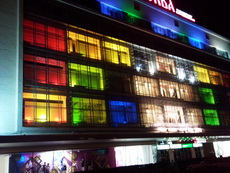 |
| (+) enlarge, 3264x2448, JPEG |
(+) enlarge, 3264x2448, JPEG |
 |
 |
| (+) enlarge, 3264x2448, JPEG |
(+) enlarge, 3264x2448, JPEG |
 |
 |
| (+) enlarge, 3264x2448, JPEG |
(+) enlarge, 3264x2448, JPEG |
 |
 |
| (+) enlarge, 3264x2448, JPEG |
(+) enlarge, 3264x2448, JPEG |
 |
 |
| (+) enlarge, 3264x2448, JPEG |
(+) enlarge, 3264x2448, JPEG |
Back to the table of contents >>>
Video
he handset records video in mpeg4 format (also there is an option to disable the sound recording in the camera's menu). All the settings here aren't too much different from the single shot mode, except for new resolutions and a bunch of effects. Maximum resolution - 720x480 pixels (30 FPS) or 640x480 pixels (30 FPS) or QVGA (up to 120 FPS). Video quality wise the PIXON12 is a decent performer by contemporary standards.
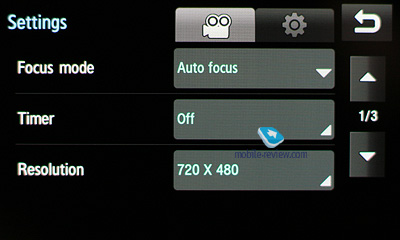
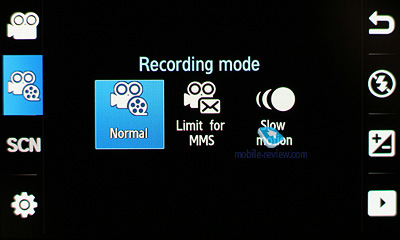
Back to the table of contents >>>
Conclusion
The PIXON12's box claims it's the world's first 12 MP cameraphone and we couldn't agree more - Sony Ericsson's IDOU, announced back in February and now known as Satio won't hit the shelves sooner than early October and only in selected markets at that. And since the PIXON12 will be available in Europe already in August, that's quite a gap, considering that previously (in case with the PIXON8), the C905 was also late to the market but only by a couple of weeks.
Another important point to make is that Sony Ericsson's imagining-savvy flagship is already a bit old-fashioned settings-wise - it doesn't bring anything new to the table (its Smile Shutter doesn't qualify as an innovation). At the same time Samsung have done a tremendous job, and all the features they have packed into the PIXON12 will sooner or later find their way to other models in their portfolio as well. With its Beauty and Smart Auto modes is one step ahead of all currently existing phones, and even those that are yet to see release. And that's where Samsung's forte comes into play - they have full access to the experience of their digital camera-oriented division, which is something no other phone maker has.
Those who want to have the most capable cameraphone around will hardly find an alternative to the PIXON12 any time soon. Furthermore, its camera will serve well both people bent on playing around with various settings and those who simply want to push the shutter button and get decent shots. All in all, it's a well-rounded solution with great ergonomics on top of that. Personally, I find it very similar to the Samsung i8910 HD quality-wise - while I like the HD's color-rich pictures better, the PIXON12 doesn't fall flat in terms of details and other aspects. Actually, it's a really tough choice to make (between the i8910 HD and PIXON12, that is), especially since other phone makers can't offer anything similar yet. For example, while the Nokia N86 is a decent phone overall with a fine camera thrown in for good measure, it still can't stand up to the PIXON12 or i8910 HD in this department. And I don't even want to mention Sony Ericsson here.
Two years ago, the breakthrough that the PIXON12 is, could be expected only from Sony Ericsson along, however Samsung have forged into the lead with their fresh ideas and great implementation of new concepts. And it doesn't seem they are going to stop any time soon.
Related links
Back to the table of contents >>>
Eldar Murtazin (eldar@mobile-review.com)
Translated by Oleg Kononosov (oleg.kononosov@mobile-review.com)
Published — 26 July 2009
Have something to add?! Write us... eldar@mobile-review.com
|
News:
[ 31-07 16:21 ]Sir Jony Ive: Apple Isn't In It For The Money
[ 31-07 13:34 ]Video: Nokia Designer Interviews
[ 31-07 13:10 ]RIM To Layoff 3,000 More Employees
[ 30-07 20:59 ]Video: iPhone 5 Housing Shown Off
[ 30-07 19:12 ]Android Fortunes Decline In U.S.
[ 25-07 16:18 ]Why Apple Is Suing Samsung?
[ 25-07 15:53 ]A Few Choice Quotes About Apple ... By Samsung
[ 23-07 20:25 ]Russian iOS Hacker Calls It A Day
[ 23-07 17:40 ]Video: It's Still Not Out, But Galaxy Note 10.1 Gets An Ad
[ 19-07 19:10 ]Another Loss For Nokia: $1 Billion Down In Q2
[ 19-07 17:22 ]British Judge Orders Apple To Run Ads Saying Samsung Did Not Copy Them
[ 19-07 16:57 ]iPhone 5 To Feature Nano-SIM Cards
[ 18-07 14:20 ]What The iPad Could Have Looked Like ...
[ 18-07 13:25 ]App Store Hack Is Still Going Strong Despite Apple's Best Efforts
[ 13-07 12:34 ]Infographic: The (Hypothetical) Sale Of RIM
[ 13-07 11:10 ]Video: iPhone Hacker Makes In-App Purchases Free
[ 12-07 19:50 ]iPhone 5 Images Leak Again
[ 12-07 17:51 ]Android Takes 50%+ Of U.S. And Europe
[ 11-07 16:02 ]Apple Involved In 60% Of Patent Suits
[ 11-07 13:14 ]Video: Kindle Fire Gets A Jelly Bean
Subscribe
|








